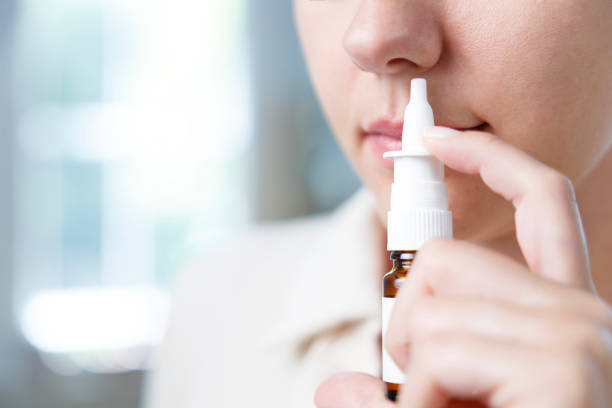USP Nasal Spray Spray Velocity Testing
The USP Nasal Spray Spray Velocity Testing is a critical component of pharmaceutical quality assurance. This test ensures that nasal sprays meet the stringent requirements set forth by the United States Pharmacopeial Convention (USP) to ensure consistent and reliable performance. Proper spray velocity is essential for ensuring the effective delivery of medication, which directly impacts patient outcomes.
The USP provides a comprehensive framework for testing nasal sprays to evaluate their performance in terms of spray characteristics such as droplet size distribution, spray pattern, and spray velocity. Spray velocity specifically refers to the speed at which the liquid is expelled from the nozzle into the air stream during inhalation or nasal application.
During this test, a nasal spray is subjected to a standardized procedure that measures the rate of fluid discharge under specific conditions. The testing apparatus typically includes a flowmeter and a manometer connected to a device capable of simulating the pressure and flow characteristics encountered in real-world use. This setup allows for accurate measurement of the velocity at which the liquid exits the nozzle.
The test is conducted according to USP General Chapter 602, which specifies detailed protocols for performing spray velocity tests on nasal sprays. Compliance with these standards ensures that products are safe, effective, and meet regulatory requirements.
Understanding the importance of spray velocity is crucial because it directly affects how well a medication can reach its target site in the nasal cavity. An inappropriate spray velocity could lead to under-delivery or over-delivery of the active ingredient, both of which have significant implications for therapeutic efficacy and patient safety.
The USP guidelines recommend that the spray velocity be measured at various points along the axis of the spray plume to ensure a comprehensive evaluation. This approach helps identify any inconsistencies in the spray pattern or velocity distribution, which could indicate issues with the spray mechanism or formulation.
In addition to measuring spray velocity, it is also important to assess other parameters such as droplet size and spray pattern. These factors work together to determine overall喷涌而出





